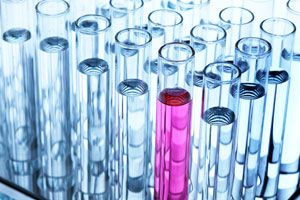Publications in October 2016 - Chitosan Hydrogels

In October 2016, 375 publications about chitosan were released by researchers from China (99 article), United States (31) und India (30) among others. Main issue was chitosan combined with nanoparticels, pharmaceutical preparations and tissue.
There are various applications of chitosan hydrogels. Chitosan-based materials can be used as scaffold, wound dressing or bone implant. Here, we present two studies which investigated chitosan hydrogels regarding the manipulation of structure properties as well as utilization in an animal model.
| Top Journals | Publications |
| Carbohydrate polymers | 46 |
| International journal of biological macromolecules | 26 |
| Materials science and engineering C: Materials for biological applications | 8 |
| Colloids and surfaces. B, Biointerfaces | 7 |
| International journal of pharmaceutics | 6 |
Table: Journals publishing the highest number of chitosan-related articles in October 2016. Source: www.gopubmed.org
Chitosan Hydrogel Structure Modulated by Metal Ions
Nie J., Wang Z. and Hu Q. Scientific Reports, 6:36005, October 2016. DOI: 10.1038/srep36005
In this study the influence of different kinds of metal ions on chitosan (CS) hydrogel structure was investigated. Metal cations can be absorbed by chelating with the amino groups of CS and thereby influence the gelation process. Morphology of the hydrogels was studied by scanning electron microscopy and confocal laser scanning fluorescence microscopy. Reaction time and gel thickness were used in calculation of hydrogel formation rate.
RESULTS:
- Concentration of Cu2+ changed hydrogel structure from oriented fibres to multi-layers
- Hydrogel structure is not influenced by weak affinity metal ions like Ca2+
- Formation of inorganic particles in the Ca2+-CS hydrogel
Conclusion: The introduction of different metal ions to CS hydrogels leads to structural changes. Metal ions with strong affinity to CS (DDA 91%), such as Cu2+ ions, have an ionic cross linking effect and therefore increase volume shrinking and transition to multi-layers. Metal ions with weak affinity with CS (e.g. Ca2+) did not change the hydrogel morphology, but precipitated with OH- and thus inorganic particles were incorporated. Metal-CS complex hydrogels could be used as copper-based fungicides or for urea uptake.
Source: https://www.ncbi.nlm.nih.gov/pubmed/27777398
Safety and Efficacy of Chitosan-Dextran Hydrogel in the Middle Ear in an Animal Model
Ünsaler S., Başaran B., Öztürk Sarı Ş. et al. Audiology & Neurotology, 21:254-260, October 2016. DOI: 10.1159/000447623
In the second study, chitosan-dextran hydrogels (CDH) were investigated regarding their ability to prevent adhesion between the tympanic membrane (TM) and intratympanic structures after surgery and potential ototoxicity in Guinea pig. Auditory brainstem responses (ABR) of 7 albino guinea pigs (GPs) were tested before and 4 weeks after surgery. CDH was injected unilateral intratympanic and saline solution contralateral. Furthermore, the middle ear mucosa of 12 GPs was abraded and the cavity was filled with CDH on one side and Gelfoam on the other. Control GPs were treated equally, but received no filling for the middle ear.
RESULTS: (after 7 weeks)
- No significant difference between pre- and postoperative ABR
- Retraction of TM in Gelfoam group
- Increased degree of inflammation in Gelfoam group compared to CDH
Conclusion: CDH has no ototoxic effects in guinea pigs. In comparison to Gelfoam is the inflammatory response and TM retraction decreased with application of CDH.
chitosan, middle ear, ototoxicity, chitosan-dextran, Hydrogel


